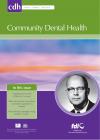Community Dental Health

- Cover Date:
- March 2010
- Print ISSN:
- 0265 539X
- Vol:
- 27
- Issue:
- 1
Editorial - Improving services for cleft lip and palate. A work in progress
An International Challenge
Services and treatment protocols for the management of children with cleft lip and palate can be remarkably different within and between countries. In Europe, there is wide variation from poorly coordinated disparate services, as in Portugal or Greece, to highly centralised specialised teams as in Scandinavia. Clinical uncertainty is evident from a striking diversity of practices. In one survey, 201 European teams carrying out primary surgical repair for unilateral clefts, employed 194 different protocols, reflecting the paucity of published randomised trials in the field (Shaw et al, 2001). A series of WHO consensus conferences between 2000 and 2005 confirmed that service organisation and treatment uncertainty are widespread international problems, while lack of resources puts the most basic surgical treatment beyond the reach of thousands of children in the developing world (WHO, 2002).
- Article Price
- £15.00
- Institution Article Price
- £
- Page Start
- 2
- Page End
- 3
- Authors
- B. Shaw
Articles from this issue
- Title
- Pg. Start
- Pg. End
- The influence of economic incentives on treatment patterns in a third-party funded dental service
- 18
- 22
- Is tooth wear in the primary dentition predictive of tooth wear in the permanent dentition? Report from a longitudinal study.
- 41
- 45
- Chewing stick use among African immigrants in West Philadelphia: implications for oral health providers
- 60
- 64
